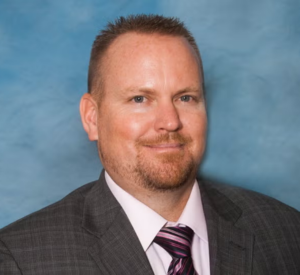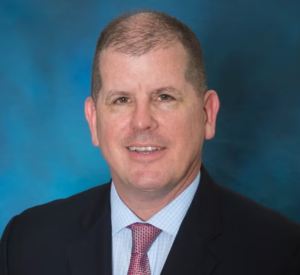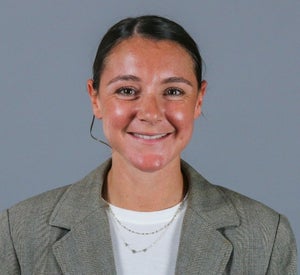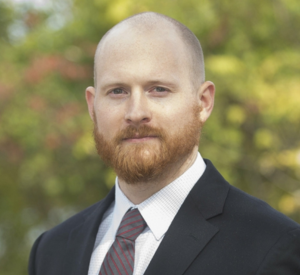The world’s first—and only—mobile research vehicle (MRV) of its kind hit the road in October, replete with state-of-the-art scanning and monitoring equipment, unique data collection capabilities and one very excited driver behind the wheel.
Brian Martin, associate director and assistant professor, Neuromuscular Research Laboratory/Warrior Human Performance Research Center (NMRL), spent more than two years planning, designing and customizing the 45-foot-long MRV with funding from the Office of Naval Research.
Now he’s bringing the advanced capabilities of the NMRL directly to sites where he and his colleagues are engaged in Department of Defense research.
“In the past, when we traveled to military bases and other locations to conduct performance testing, we had to bring our equipment with us, then secure an appropriate location onsite to collect data and perform tests,” notes Martin. “In addition, we had the challenge of finding a location on base to store the equipment or bring it back to the lab in Pittsburgh.”
“With the new MRV, we have everything we need right at our fingertips. It is a complete, multi-functional lab on wheels,” he continues.
The MRV was ready to roll when a unique opportunity presented itself. The NMRL was looking for a way to expand the number of Reserve Officers’ Training Corps (ROTC) recruits in one of its studies.
Martin put Lawrence, Kansas, into the GPS. The MRV’s first stop: the University of Kansas’ Jayhawk Athletic Performance Laboratory (JAPL).

Collaboration Fuels Success
Working together with the JAPL, Martin and his team were able to secure the approvals necessary to add the University of Kansas as a new study site for the NMRL’s Bone and Body Composition Adaptations to Training (BoBCAT) study.
This research is designed to help military services better understand the beneficial adaptations that resistance training and exercise can have on bone formation. Specifically, researchers examine the effects of exercise and loading on bones using bone imaging, blood samples and a set of exercises.

“This is the first step in helping to reduce stress fractures,” says NMRL Research Assistant Professor Adam Sterczala.
“One of the biggest issues in the military right now is the prevalence of stress fractures,” continues Sterczala. “It causes a lot of downtime, so the military is interested in doing everything they can to reduce the number of them. As a result, we are examining the effects of exercise loading on bone in a number of different ways.”
Over a period of eight days, the NMRL and JAPL teams tested nearly 40 new U.S. Army, Navy and Air Force ROTC recruits in the MRV. Among other things, they assessed bone mineral density and structure and collected blood samples to examine markers of bone formation and resorption pre- and post-exercise. The collected data will be used to examine changes in hormone levels, bone and body composition and physical performance following approximately six months of physical training.

NMRL Research Program Manager Kelly Mroz served as one of two bone densitometry technologists on the trip and was responsible for keeping the scanners and other sensitive equipment at the appropriate temperature and humidity. “It was an intense schedule, with some pre-5 a.m. start times and exceptionally long days, yet there was a pervasive spirit of professionalism, energy and grace,” notes Mroz.
Road Worthy

Shortly after nearly 1,800 miles and more than 24 hours on the road to and from Kansas, Martin carefully assessed all of the equipment on the MRV. He reported no damage and no issues with functionality.
“We performed many calibrations and repeat testing with the MRV equipment before actually taking it on its first long trip,” says Martin. “But it was reassuring to know our planning and customized installation was able to stand up to the rigors of the road.”

Martin foresees more trips to the University of Kansas as well as to the U.S. Naval Academy and the Marine Corps Base Quantico in Virginia in the near future.
He hopes the MRV will also be used for community outreach and recruitment in addition to NMRL research, as well as with collaborations with other researchers from the University of Pittsburgh and UPMC.
“Brian deserves many kudos for making his vision a reality,” adds Professor and NMRL Director Bradley C. Nindl. “He was diligent and industrious in his approach to the planning, design and execution of this unique vehicle. He is a special individual who contributes so much to the success of our lab.”
Alumni Gift Powers Even More Research

NMRL Director Bradley Nindl, alumna Jean Rhoads, alumnus Barry Rhoads, NMRL Program Manager Kelly Mroz, Athletic Training Program Director Amy Aggelou, NMRL Associate Director Brian Martin and Associate Professor Shelly Fetchen DiCesaro.
In fall 2024, SHRS gratefully accepted a $100,000 pledge from Barry D. Rhoads, Esquire (LAW ’80), and his wife, Jean Rhoads (PHARM ’81), to support the work of the NMRL.
Both Barry Rhoads and NMRL Director Bradley C. Nindl have military experience and are passionate about leveraging Pitt’s health and performance science and research ecosystem to serve our nation.

Barry Rhoads greets Brad Nindl in the MRV.
Rhoads is a retired lieutenant colonel and former federal prosecutor. Nindl is currently serving in the U.S. Army Reserve as a colonel and has more than 33 years of continuous service. He worked in scientific leadership roles in the U.S. Army for more than 20 years before taking on his current role at the NMRL.
The couple’s generous gift to support the NMRL is just a part of their ongoing support of human-performance research. Thanks to the efforts of Barry Rhoads working with Congress, more than $50 million was appropriated so the University of Pittsburgh could continue doing this type of research for the past 20 years. Barry Rhoads would now like to bring the MRV to Washington, D.C., so members of Congress and their staff can see it firsthand.









